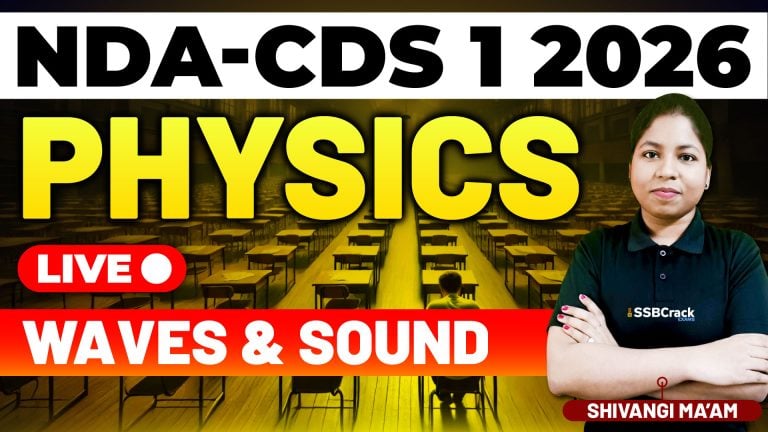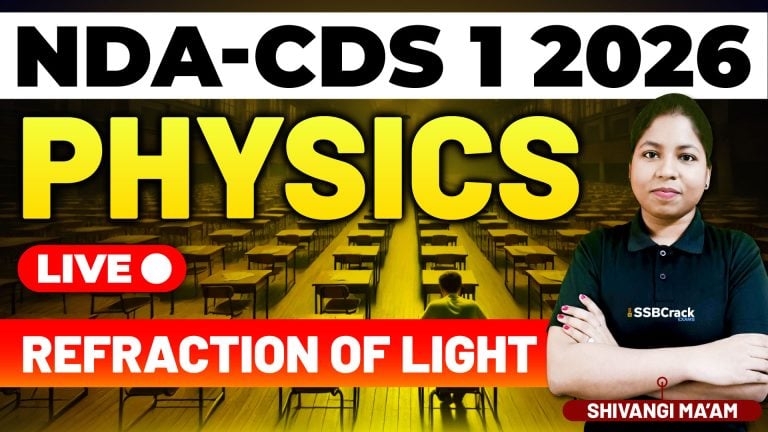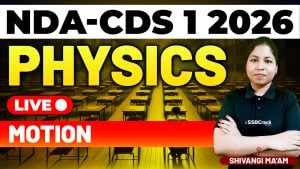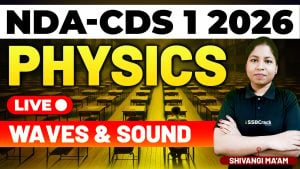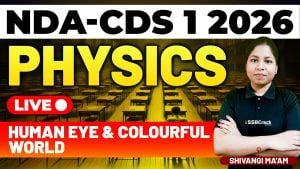Introduction
In preparation for the NDA 2 2024 exam, understanding mathematical concepts is crucial. The live class on “Sets, Relation & Function – Class 2” focused on advanced topics such as the Cartesian Product, Relations, Types of Functions, Inverse Functions, and the Composition of Functions. This blog will provide an overview of these concepts, aiming to simplify and clarify them for better understanding and application. Additionally, practicing Multiple Choice Questions (MCQs) to reinforce these concepts was a key part of the session.
Cartesian Product
The Cartesian Product is a fundamental concept in set theory. It involves combining two sets to form ordered pairs. If we have two sets, A and B, their Cartesian Product, denoted as A × B, is the set of all possible ordered pairs where the first element is from A and the second is from B. This concept is crucial for understanding relations and functions, as it lays the groundwork for pairing elements from different sets.
Example: If A = {1, 2} and B = {a, b}, the Cartesian Product A × B would be {(1, a), (1, b), (2, a), (2, b)}.
Relation
A Relation in mathematics is a connection between elements of two sets. It is a subset of the Cartesian Product. Relations can be represented in various ways, including sets of ordered pairs, tables, graphs, or mappings.
Example: Given sets A = {1, 2, 3} and B = {a, b}, a possible relation R from A to B could be {(1, a), (2, b), (3, a)}. This means 1 is related to a, 2 is related to b, and 3 is related to a.
Types of Relations
Understanding the different types of relations is essential for solving problems effectively. Here are some common types:
- Reflexive Relation: Every element is related to itself. For a set A, R is reflexive if (a, a) ∈ R for every a ∈ A.
- Symmetric Relation: If one element is related to another, then the second element is related to the first. R is symmetric if (a, b) ∈ R implies (b, a) ∈ R.
- Transitive Relation: If an element is related to a second element, which in turn is related to a third element, then the first element is related to the third element. R is transitive if (a, b) ∈ R and (b, c) ∈ R imply (a, c) ∈ R.
- Equivalence Relation: A relation that is reflexive, symmetric, and transitive. This type of relation partitions the set into equivalence classes.
Function
A Function is a special type of relation where each element in the domain is related to exactly one element in the codomain. Functions are often denoted by f: A → B, meaning that f is a function from set A to set B.
Types of Functions
Understanding the types of functions is vital for problem-solving:
- One-to-One (Injective) Function: Each element of the domain maps to a unique element in the codomain. No two different elements in the domain map to the same element in the codomain.
- Onto (Surjective) Function: Every element of the codomain is the image of at least one element from the domain. In other words, the range of the function is equal to the codomain.
- Bijective Function: A function that is both injective and surjective. This means it has a perfect one-to-one correspondence between the domain and codomain.
- Identity Function: A function that maps every element to itself. For set A, the identity function is denoted as I: A → A, where I(a) = a for all a ∈ A.
- Constant Function: A function that maps all elements of the domain to a single fixed element of the codomain.
Inverse Function
An Inverse Function essentially reverses the effect of the original function. If f: A → B is a bijective function, then its inverse, denoted as f⁻¹: B → A, maps each element of B back to its corresponding element in A.
Example: If f(x) = y, then f⁻¹(y) = x.
Composition of Functions
The Composition of Functions involves combining two functions to form a new function. If f: A → B and g: B → C, then the composition g ∘ f: A → C is defined by (g ∘ f)(x) = g(f(x)).
Example MCQs
Determine the type of relation:
- Given R = {(1, 1), (2, 2), (3, 3)}, is R reflexive, symmetric, transitive?
- Answer: Reflexive, Symmetric, Transitive.
Identify function type:
- If f(x) = 2x + 3, is f injective, surjective, or bijective?
- Answer: Injective (assuming the domain and codomain are all real numbers).
Find the inverse function:
- If f(x) = x – 5, what is f⁻¹(x)?
- Answer: f⁻¹(x) = x + 5.
Composition of functions:
- If f(x) = x + 1 and g(x) = 2x, what is (g ∘ f)(x)?
- Answer: (g ∘ f)(x) = 2(x + 1) = 2x + 2.
Conclusion
Mastering the concepts of the Cartesian Product, Relations, Types of Functions, Inverse Functions, and Composition of Functions is critical for the NDA 2 2024 exam. Through understanding and practicing these topics, students can build a strong foundation in mathematics. Using MCQs to reinforce learning helps solidify these concepts and prepare effectively for the exam. Remember, clarity and practice are key to success in mastering these mathematical concepts.




